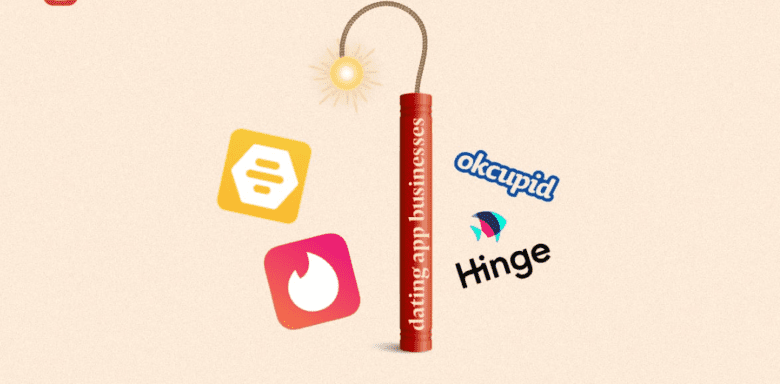The Dating App Struggle in 2025: How Online Dating, Bumble, and the Swipe Paradox Are Failing Users
In 2025, the online dating industry faces a harsh reality: a dramatic decline in user trust, platform performance, and cultural relevance. Once hailed as a revolutionary way for people to find love, today’s most popular dating apps—from Tinder, Bumble, and Hinge to platforms owned by Match Group like OkCupid and Match.com—are now in a full-blown identity crisis. While the dating app business thrived during the pandemic, 2025 highlights seven powerful reasons why this once-booming industry is now struggling.
1. The Great Swipe Fatigue: Users Are Burned Out
After years of gamified dating, users are showing signs of burnout. The novelty of the swipe wore off years ago, and today, the app experience feels more like a chore than a chance at romance.
According to a Pew Research survey, nearly 60% of Americans report feeling “overwhelmed” by the cycle of matching, messaging, and ghosting. For many daters, especially those seeking a deeper connection, the process has become emotionally exhausting.
The constant stream of superficial profiles, low-quality interactions, and the pressure to present a curated personality online has left many disillusioned. In fact, studies show that many users now feel dating apps are optimized more for engagement metrics than meaningful outcomes—and it’s costing platforms dearly in customer satisfaction and retention.
2. The Monetization Backlash: Profit Over People
The success of many platforms has led to an aggressive shift toward profit-driven strategies. The freemium model—where users can sign up for free but must pay for critical features—has created a frustrating two-tier experience.
To potentially match with more users, see who likes you, or even get better visibility, users are now forced to pay for premium features. Many feel this locks real connection behind a paywall, creating dissatisfaction and eroding trust.
This paradox—where success means helping users leave the app, but revenue depends on keeping them hooked—has become a core tension in the dating app business. While companies like Match Group still generate billions in revenue, they are seeing fewer paying users year over year.
The earnings reports from 2023 to 2024 reflect this tension. Stock prices of major companies like Bumble have plummeted due to user loss and stagnant growth.
3. Gen Z Is Breaking Up with Dating Apps
If Millennials helped make online dating mainstream, Gen Z is now ushering in its backlash. According to a recent report from Axios, in 2024, nearly 79% of U.S. college students say they refuse to use dating apps altogether.
Their reason? A strong preference for real-world, authentic connections.
Instead of swiping, Gen Z is opting for hobby groups, mutual friends, local events, and in-person meetups to explore relationships. This generational shift highlights a broader trend away from screen-based interactions and toward tactile, emotionally resonant experiences.
For tech companies that built entire platforms around a digital-first relationship model, this evolution represents an existential threat. The shift isn’t about rejecting love—it’s about rejecting the platform.
4. The Paradox of Choice: Too Many Options, Too Little Meaning
Having too many options can feel like having none at all. In the world of online dating, the paradox of choice is painfully real. With infinite swiping, many users experience decision paralysis, reducing every potential connection to a few profile pictures and curated lines.
This excess has created a cycle of browsing instead of bonding. Users often treat matches like commodities—disposable, replaceable, and low-effort. And it’s impacting long-term outcomes: Fewer matches turn into real-life dates and even fewer into meaningful relationships.
What was once a tool to help people find love has become a numbers game, eroding emotional investment and the organic chemistry needed to sustain romantic interest.
5. From Romance to Revenue: The Crumbling Business Model
The cracks in the business side of dating apps are starting to show. Match Group, which owns over 45 dating platforms, including Tinder, OkCupid, Hinge, and Match.com, has seen its stock decline steeply since its peak in 2021.
From 2023 to 2024, the company reported flatlining growth and a notable drop in paying users. Even Bumble, once valued at over $13 billion, now sits at a fraction of that, despite acquisition efforts and new dating initiatives.
While niche dating platforms show promise, such as those catering to LGBTQ+ communities or specific cultural groups, the mainstream apps are finding it hard to stay relevant—especially when their strategy is built around maximizing monetization rather than maximizing love stories.
6. Trust Issues: Users No Longer Feel Safe or Seen
With rising scams, fake profiles, and catfishing scandals, trust has become a growing concern. Women, in particular, report high levels of discomfort and harassment, while both men and women feel deceived by inflated photos or dishonest bios.
The platforms have failed to instill confidence, often lagging on safety features or algorithm transparency. Users are asking for more control, accountability, and honesty from these services.
This erosion of trust is especially damaging for platforms designed to build relationships. If users can’t trust the app experience, how can they trust a potential partner found through it?
7. Offline Dating Is Making a Big Comeback
Here’s the twist: Many Americans are rediscovering that the best way to meet someone might just be the old-fashioned way—in person.
After years of virtual-first connections, people are joining new people meetups, interest-based clubs, and live events to meet others organically. Some platforms are adapting—Bumble has experimented with real-life experiences, while others invest in physical events as a supplement to digital discovery.
For millions, the idea of meeting through a screen now feels sterile and ineffective. As human beings, we’re wired for real interaction, real chemistry, and real emotion.
Where Does the Industry Go from Here?
There’s no doubt the online dating industry is facing serious headwinds in 2025. But there’s also opportunity.
To thrive again, platforms must:
- Prioritize authentic user experiences
- Build trust through transparency and better policy
- Innovate beyond the hook-based swiping model
- Focus on outcome-driven matching, not just engagement
The next shift towards meaningful dating experiences will be driven by platforms that listen, adapt, and deliver value.
Final Thoughts: Is Swipe Culture Dead?
The struggles of dating apps in 2025 reflect more than just a change in tech—they reflect a cultural realignment. As users seek more intentionality in how they connect, the old model of gamified dating is being challenged.
If companies can overcome the limitations of the past, there’s still hope for the industry. But if they double down on monetization without meaningful change, they risk becoming obsolete.
At the heart of the decline is a simple truth: People want love, not just likes.



